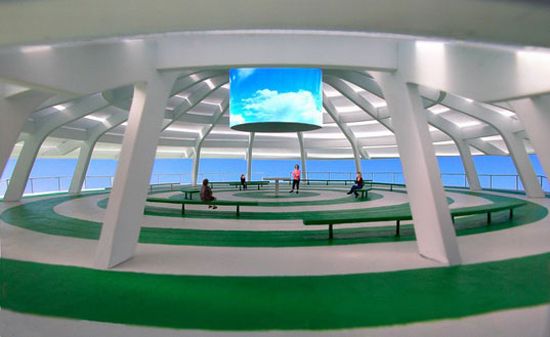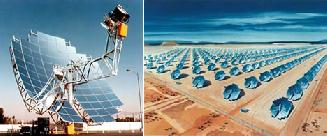
Michael Jantzen’s experimental designs have always been marked by the perfect blend of stunning architecture and ecological sustainability. The Solar Wind Pavillion is probably one of the best of Michael Jantzen’s creations. Planned for the California State University at Fullerton, the Solar Wind Pavilion is an impressive integration of wind power generation, solar energy, and rainwater harvesting, all combined into a gathering place for approximately 300 students and faculty at a time to study, entertain, meditate, relax or access the internet on the movable concentric benches.
Built out of lightweight, strong, composite concrete, the one hundred and fifty foot tall pavilion would have frosted glass, shaded by a series of concentric louvered rings, for the extensive canopied roof.

The long vertical axis you see is the wind turbine. It forms the key to the entire technology on which the Solar Wind Pavilion has been constructed. The Turbine generates electrical energy from the natural wind, which in turn, can be directly used by the campus or stored in batteries for later use. Moreover, the Turbine rotates randomly to exhibit interesting interactive digital imageries and sounds on the large cylindrical digital projection screen at the centre of the canopy. The screen would be coupled by a series of fogging nozzles under the canopy to keep the place cool.
Now let us get into the ‘solar’ part of the design. Four large rings of photovoltaic cells convert sunlight into electricity, which, in the same way as electricity generated by the Turbine, can be used immediately or stored in batteries. Another way of preserving the energy generated by both the abovementioned sources and rainwater (collected to be used for watering plants etc.) would be storing it in the form of hydrogen gas, to be used to power vehicles etc. in the campus.

The Solar Wind Pavilion seems to be an epitome of environmental awareness and sustainablity. It’d surely go down well with the students and faculty members alike of California State University.
Via: Inhabitat




